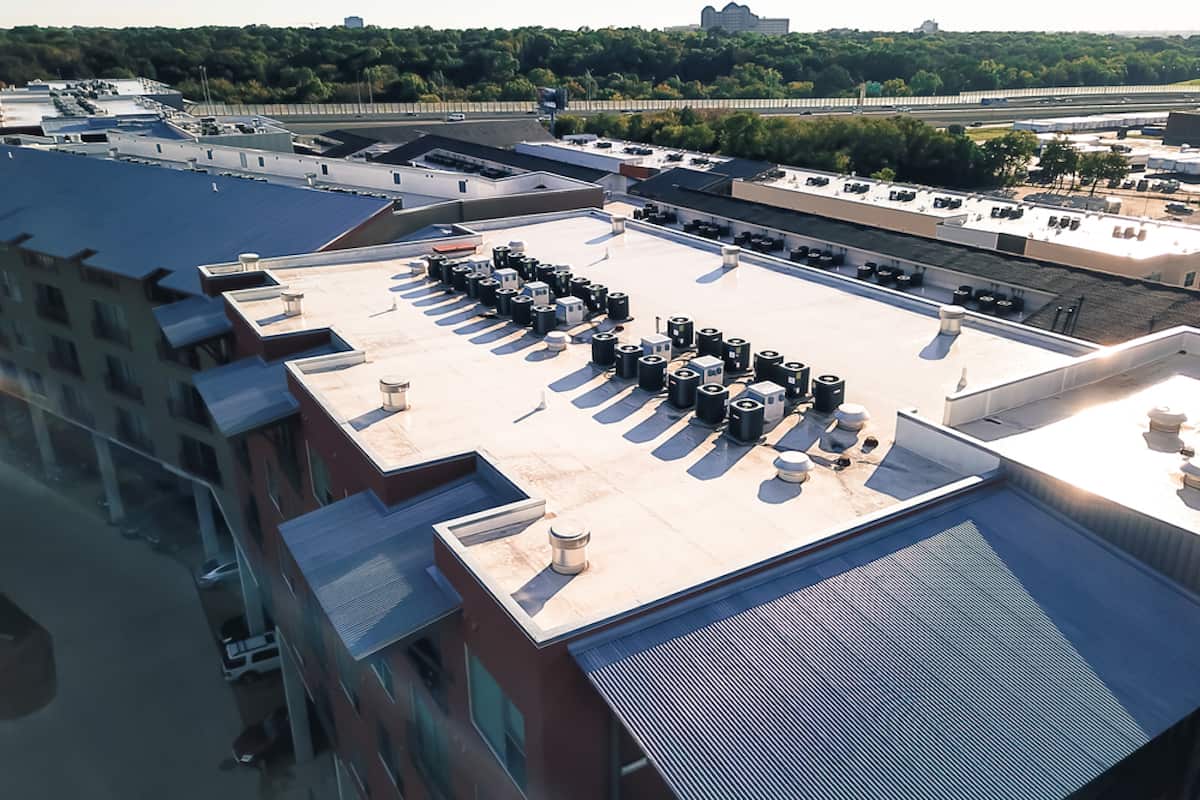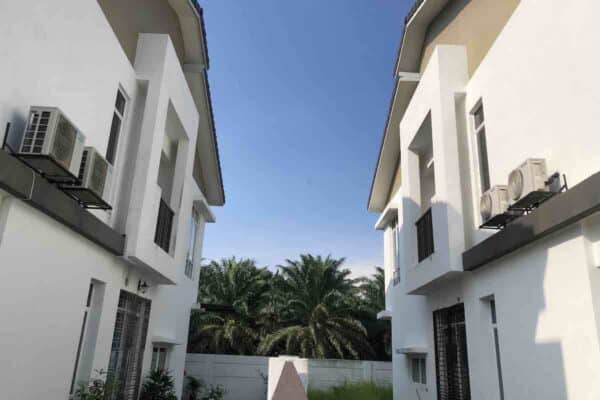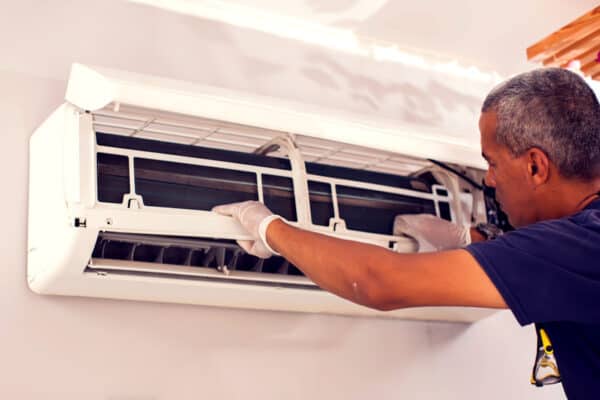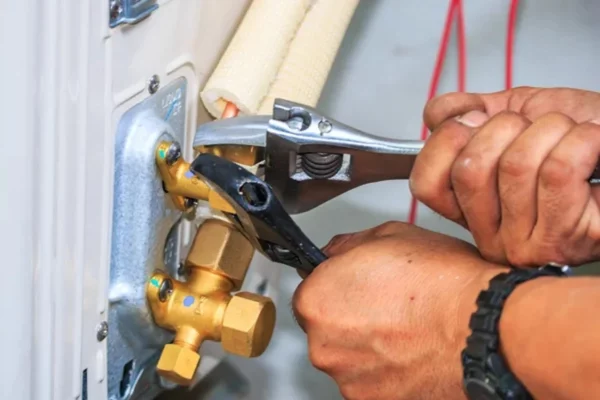Best HVAC System for Condominiums (Heating & Cooling)
Condominium owners often suffer from poor-performing HVAC systems as their condo HVAC unit can’t provide adequate heating and cooling. I thought there is a better HVAC system for condominiums. So, I did some studies.
It turns out that the best HVAC system for condominiums is a ductless mini split heat pump system. It is an independent heating and cooling system that allows you to have precise temperature control in your condo. In addition, ductless mini splits are extremely efficient and quiet.
Many condominium owners use a portable air conditioner when their HVAC system is underperforming. With a ductless mini split system, they can now enjoy maximum comfort in their condo. However, there are some caveats.
Why Mini Splits are the Best HVAC System for Condominiums?
Condominiums usually have a centralized boiler and chiller to provide heating and cooling respectively.
When heating is needed, the centralized boiler will circulate hot water to individual air handlers in each condo unit. Similarly, when cooling is needed, the centralized chiller will circulate chilled water to the said air handler as well.
Inside each condo unit, the air handler draws in the indoor air within the condo unit and circulates it through a heat exchanger where the hot water or the chilled water is flowing to provide heating and cooling.
Conventional Condo HVAC System Problems
Such a centralized heating and cooling system generally have better energy efficiency. However, every condo unit is fully relying on the centralized system to have heating and cooling which is risky.
For instance, if the maintenance team didn’t do a good job of keeping the centralized system in a good shape, the system may fail when it is needed the most thereby affecting the entire condo.
Personally, I’ve seen many condo owners complain about insufficient heating and cooling. Most of the time, the issue comes from the water temperature which is too low for heating and too high for cooling. Such an issue is directly related to the performance of the central boiler and chiller.
Therefore, in order to detach from the condo’s centralized HVAC system, an independent heating and cooling system is preferred.
Advantages of Mini Splits in Condominiums
Out of several independent heating and cooling systems, I find the ductless mini split heat pump system is the best HVAC system for condominiums and here are a few key reasons:
- Mini splits are much quieter than both window and portable air conditioners.
- Mini splits are much more energy efficient than both window and portable air conditioners.
- Mini splits can be potentially more energy efficient than the existing central HVAC system in your condo depending on the condition of the existing central HVAC system.
- Mini splits can provide different thermal zones in your condo unit (eg: each room has its own temperature control).
- Your total energy cost can be lower with mini splits because you can eliminate unnecessary heating (eg: turn off the living room one when you’re going to bed).
- Mini splits are more reliable than central HVAC systems as they don’t rely on a single source.
- Mini splits can provide more precise temperature controls thereby providing you more comfort.
Most importantly, mini splits don’t rely on the central HVAC system in condominiums. Meaning you can set the temperature of your condo unit and each room based on your preferences. Meanwhile, you also enjoy better comfort and more quietness in your home.
Concerns about Getting a Mini Split in Condominiums
Although mini splits are great for condominiums, there are a few concerns/obstructions for a mini split to be installed in condominiums.
1. Mini Split Placement
A mini split system is comprised of an indoor unit (often known as a head unit) and an outdoor unit (the condenser). The indoor and outdoor units are connected by a pair of insulated copper tubes and communication cables.
Normally, each room will need an indoor unit. If your condo has 3 bedrooms and a living room cum kitchen, you’ll need 4 indoor units. Fortunately, you can use a multi-zone mini split system so that you’ll only need one outdoor unit.
In most cases, the location of the outdoor unit is the main concern.
Generally, the best place to put the mini split outdoor unit in a condo is on the balcony. The mini split outdoor unit can sit on the floor or hang from the slab on the balcony.
If permitted, the outdoor unit can be placed on a wall bracket and hung on the exterior wall of the condo. In fact, many high-rise buildings did the same but it is not recommended due to safety and maintenance concerns.
Nonetheless, adequate airflow is all that is needed for the outdoor unit of the mini split system.
In some cases, the outdoor unit can be ducted to divert the air discharge direction. For example, to avoid discharging hot air directly to your neighbor.
For a comprehensive guide on mini split placement, check out my post Mini Split Placement Guide | Pros & Cons (with Photos).
2. Noise of the Mini Split Outdoor Unit
Since the most suitable place for the mini split outdoor unit is usually the balcony, many condo owners worry about the noise produced by the outdoor unit.
On average, the highest and lowest noise level produced by a single-zone mini split outdoor unit is about 54 dB and 51 dB respectively. A multi-zone mini split outdoor unit generally produces about 55 dB of the noise level.
Such a noise level usually won’t disturb your neighbor unless the outdoor unit is placed very close to the window of the condo unit next to you.
For more details about air conditioner noise and samples, see my post What is a Good Noise Level for an Air Conditioner?
Additionally, you can cover the mini split outdoor unit to reduce the noise if there is a complaint given that sufficient ventilation is allowed for the outdoor unit.
3. Interior Aesthetics
When installing mini splits in an existing condo unit, it is not feasible to conceal the mini split lines in the wall although it can be done.
Hence, line set cover kits can be used to cover up the lines as nicely as possible. Besides, the mini split indoor units can be placed nearer to the outdoor unit to minimize the pipe length.
Regardless, good workmanship is needed in order to ensure you don’t end up with a bunch of ugly-looking pipes and conduits.
Mini Split System Design in Condominiums
Mini splits can be designed in many different ways in condominiums. Most of the time, a multi-zone mini split system is more practical due to limited space.
Below is an example I prepared to illustrate a typical mini split system in a condominium:

When cooling, the mini split indoor unit produces condensate water that needs to be drained via gravity flow to the nearest floor trap. So, the indoor unit should be placed as close to the drain point as possible.
In case gravity flow is not possible, a drain pump can be used to give the condensate water a push.
In the above example, the indoor unit in bedroom 1 is mounted on the kitchen wall so that its drain pipe can penetrate through the wall behind and discharge through the kitchen floor trap.
Since the kitchen, dining room and living room are not separated by any wall or door, a large capacity unit can be used to heat and cool the entire space.
Additionally, a ducted unit can be deployed to improve interior aesthetics.
The capacity of mini splits shown in the above example is as follows:
- Bedroom 1 – 6000 BTU
- Bedroom 2 – 6000 BTU
- Kitchen, dining and living room – 12000 BTU
With these mini split indoor units, a 24000 BTU three-zone mini split outdoor unit will be sufficient.
For mini split sizing, see my post Mini Split Sizing Guide: How-to, Chart & Example.
Each mini split indoor unit has its own remote controller which you can set the desired room temperature, schedule, fan speed and other settings without affecting other rooms.
Frequently Asked Questions
- Can you install a mini split AC in condos? It is fine to install a mini split AC in condos given that there is an appropriate place for the mini split outdoor unit and you have the HOA’s consensus.
- Can you install a mini split on the balcony? You can install a mini split on the balcony of condos as long as there is sufficient ventilation for the mini split outdoor unit.
If you’re looking to buy a mini split for the rooms in your condo, check out thetradetable.com. They sell various kinds of mini split including those from Gree, ACIQ and MrCool.
If you have anything to add (or ask) about this topic, leave a comment down below!








